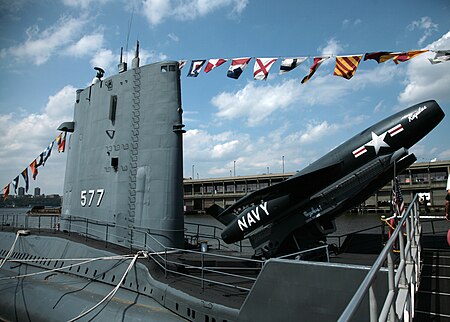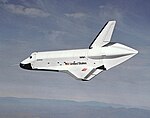USS Growler (SSG-577)

USS Growler (SSG-577) was an early attempt by the U.S. Navy to field a cruise missile submarine that would provide a nuclear deterrent using its second series of cruise missiles. Built to deliver the Regulus I cruise missile, Growler was the second and final submarine of the Grayback class, fourth ship of the United States Navy to be named after the growler. Since Regulus I and Regulus II programs had problems, Growler and Grayback were the only two submarines built in this class as instead, the U.S. Navy veered its nuclear deterrence efforts into submarine launched ballistic missiles (SLBMs)—the Polaris missile program. What makes Growler and her sister unusual was her nuclear armament, deployed on a conventional diesel-electric submarine. Her mission was to provide nuclear deterrent capability off the Pacific coast of the Soviet Union during peak years of the Cold War, from 1958 to 1964. Additionally, special forces missions were deployed from its torpedo tubes and nuclear hangar.
Excerpt from the Wikipedia article USS Growler (SSG-577) (License: CC BY-SA 3.0, Authors, Images).USS Growler (SSG-577)
Hudson River Park Esplanade, New York Manhattan
Geographical coordinates (GPS) Address External links Nearby Places Show on map
Geographical coordinates (GPS)
| Latitude | Longitude |
|---|---|
| N 40.76511 ° | E -73.99999 ° |
Address
USS Growler
Hudson River Park Esplanade
10069 New York, Manhattan
New York, United States
Open on Google Maps









